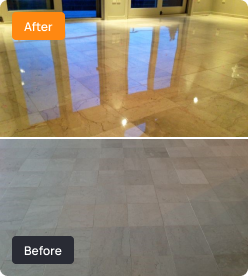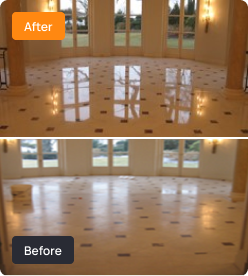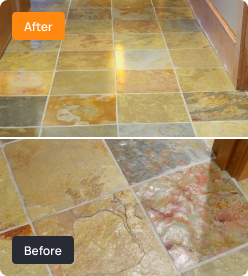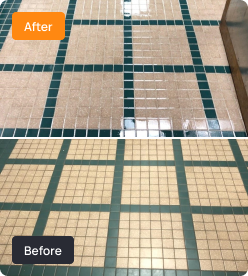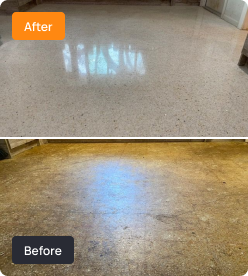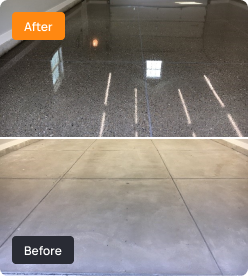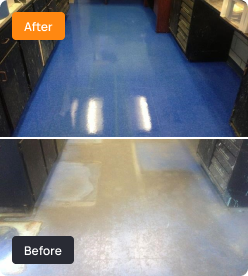A Guide For Cleaning Your Marble
Due to its elegance, durability and ageless beauty, stone is being specified and installed in increasing quantities these days. Building activity may be off its high, but stone continues to represent an ever increasing portion of the floors being installed. Architects are specifying granite for floors and walls and using stone in common areas of […]


Due to its elegance, durability and ageless beauty, stone is being specified and installed in increasing quantities these days. Building activity may be off its high, but stone continues to represent an ever increasing portion of the floors being installed. Architects are specifying granite for floors and walls and using stone in common areas of new office buildings. Designers are selecting marble or limestone as flooring material in homes both small and large.
While natural stone is being used in more and more places, there is little information out there on how to care for it. You can ask 5 different professionals “How should I care for my stone?” and get five different answers. This can become very frustrating, particularly when the wrong answer could prove rather expensive.
The first step in properly caring for your stone is to determine what type of stone you have, and what makes it unique. The more you know about your stone, the easier it will be to maintain and care for it.
Most of the stone used today falls into one of three categories.
- Igneous – This rock was formed by fire. This stone was once a molten flowing mass of liquid rock before cooling into the hard surface we see today. Granite falls into this this category.
- Metamorphic – stone is a mixture of clays, carbonates and other minerals which has been subjected to intense heat and pressure to fuse this material into a beautiful stone. Marble falls under this category.
- Sedimentary Stone – Mineral s and clay deposits form this stone. Old river bottoms or flood plains would be where this type of stone would be found. The shear weight of the continued deposits solidifies this mixture under its own shear weight. Limestone and sandstone are the most common type of sedimentary stone.
General Stone Maintenance
The steps discussed constitute a general procedure for cleaning and maintaining your marble and limestone surfaces. One of the first things to learn and accept, is that all stone is porous to some degree. What this means is that liquid can and will penetrate the stone carrying with it the potential to stain your surface. The quicker a spill is picked up the easier it will be to clean the stone. You can expand this time, by arranging to have your surface sealed to prevent liquid penetration.
Cleaners are not created equal. It is important to know the ingredients of the cleaner you will be using. Cleaners can be acidic, alkaline (basic) or neutral. Each type of stone can react differently with acid and alkaline cleaners. Marble and limestone, is largely made of calcium carbonate, the same material we are familiar with as chalk. Calcium Carbonate is highly acid sensitive. Acids will dissolve calcium carbonate, and therefore marble and limestone. Most acidic cleaners will etch your marble, literally dissolving micro holes into the surface. Overtime the appearance would dull or form water spots that you are unable to clean, or if heaven forbid you applied a calcium remover literally dissolve the surface away. In all cases, this will require you to find a professional craftsman to make a house call and re-polish the surface, an expensive avoidable outcome to applying an acidic cleaner to a marble or limestone surface. Alkaline and neutral cleaners are the preferred class of cleaner to avoid acid etching. While this avoids damage, this is not enough to insure good cleaning. Having eliminated acidic cleaners, which would include vinegar.
When dealing with a porous substrate the question becomes how to break the water tension that can prevent the cleaner from getting into the pores and crevices where dirt and oil hide. Cleaners can be further broken down into solvent based or surfactant based. A solvent based cleaner will seek to dissolve dirt and float it away. A surfactant cleaner will reduce the surface tension of water allowing it to enter pores and crevices, and then when it finds dirt and oil surround it and facilitate it being carried away by the liquid cleaner. When dealing with a porous substrate, a surfactant based cleaner offers significant advantages.
Stone floors should be dust mopped frequently. This picks up the dirt and grit that will normally scratch the marble. It’s not your shoes that wear a floor, but what is trapped between your sole and the floor. Marble and limestone are inherently soft stones. Dust mopping removes the big stuff that could scratch the floor underfoot or mop.
Floors should then be damp mopped daily. Emphasis on damp (not wet). Damp mopping picks up grit, allowing it to stick to the mop, and be carried to the bucket to be rinsed off. Wet mopping may be appropriate to dissolve a sticky spill, but it will also deposit dirt in the grout lines to concentrate as the water evaporates. Damp mop with a surfactant cleaner for best results.
Remember change the water in your bucket often to avoid dirt and grime scratching your stone surface. If you can’t see the bottom of the mop bucket it is time to change the water.
If in doubt, the most important thing to know is the number of your local stone care professional. A true professional can guide you on your stone type, your particular building’s needs, and an appropriate care procedure and frequency that account for both. Your stone is precious to you, there is no need to make precious mistakes, when a little education can make cleaning a breeze, and maintain a beautiful appearance.
Call MARBLELIFE at (888) 524-3372 or visit us online to secure your FREE ESTIMATE at www.MARBLELIFE.com or to www.MARBLELIFEPRODUCTS.com to secure the care products appropriate to your surface, and your desire for an easy effective cleaning solution.


